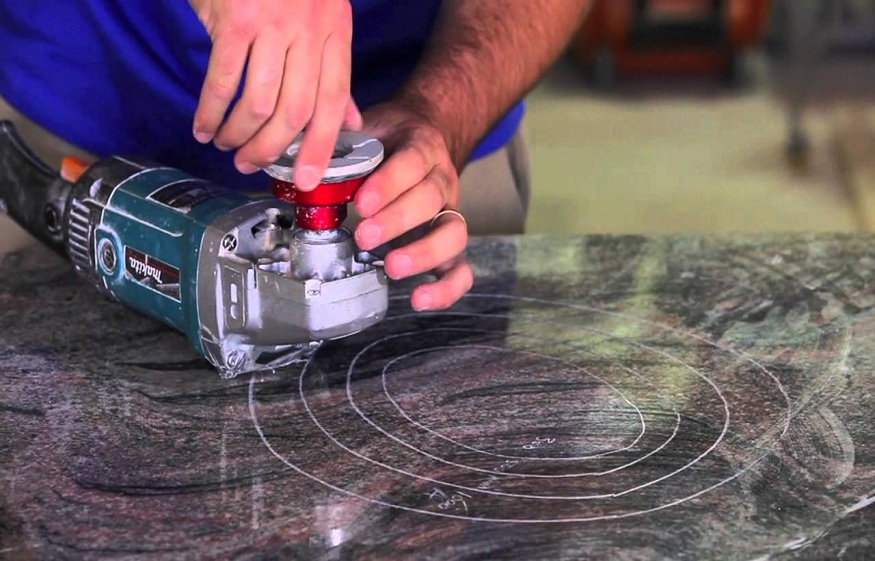The process of polishing is straightforward. Because technique matters more than material, conventional procedure calls for utilizing stones of moderate hardness for most tasks. The polisher usually starts with a 400-grit stone, then moves on to a 600-grit, 900-grit, and sometimes a 1200 grit stone to get the desired finish, but this all depends on the surface roughness. Suppose you’re trying to achieve an SPI A1 finish, for instance. In that case, the polisher should make the transition from a stone (fixed abrasive) to a diamond compound (loose abrasive) with an as little visible scratch pattern as possible. This is why professionals prefer to use a 900-grit stone and sometimes even a softer 1200-grit stone if the surface requires a super finish.
This procedure is determined by the kind and hardness of steel being used. The surface of 46 HRC 420 stainless steel or H13 may be easily ripped and torn by stones. Smoothing out and refining the contours will produce more subtle peaks and valleys. Stones are most effective on materials having a hardness of 50–52 HRC. It won’t tear, saving time and effort for the polisher who doesn’t have to subject the material to as many stoning procedures.
The golden rule of machining is to always finish off with a polish. To make this, knowledge and conversation are crucial. The key to effective communication is establishing the correct culture. Instead of taking the backward approach of assuming that the polisher can cure the problem, the machining team has to be aware of the challenges that will need to be overcome. When working backward, everyone must assist their internal customer, the next person in the chain of command. It follows that the polisher is the internal customer of the machinist, and the customer is the external customer of the polisher.
The better the finished product, the more a machinist can assist the polisher, the better. The machinist and polisher need to talk to one another to make a better end product. At the outset of every project, knowing the precise end size and needed final polish is crucial. The polisher is aware of the desired result, but what steps should be taken to attain it? Experts claim that polishers have difficulty answering machinists’ questions about how much stock will be removed to achieve the desired finish. The buyer will get superior components if there is a sufficient supply to be polished.
An improved final product is directly proportional to the degree to which the machinist aids the polisher.
Measuring. Suppose you need a flawless, highly polished finish (an SPI A1 finish). Knowing how much material will be removed with each stage is essential if you plan on using a 400-grit stone as the first in a series of three or four. Nothing is known until it is measured. Timing is essential for this.
Although time-consuming, determining how much stock a polisher removes is as easy as utilizing a dial indicator. The polisher’s objective is not to reduce the object to a specific size but to construct a history of the amount of material the polisher has removed off the surface by measuring and recording his progress at each stage.
This technique makes use of sight and hands-on work. The polisher constantly removes the scratches he makes to produce smooth surfaces. Crisscrossing is the preferred approach. The best way to remove scratches made with a 400-grit stone is to make them all face the same direction, then use a 600-grit stone to remove them. How much material was removed may be determined by measuring with the 400-grit and then with the 600-grit.
The removed material is visible throughout the crisscross polishing process, allowing the polisher to precisely gauge the amount. Experts caution that the crossing approach isn’t always an option because of the item’s geometry. The polisher may still measure and be confident that he removed the previous step, provided he keeps track of the quantity of stock removed.
It is essential to remember that machinists and polishers must be truthful about the objects they use as standards for measurement. Some users of inspection sheets don’t bother to measure each component, waiting instead to mark off the whole page after it’s complete. The first one is measured, and then the remainder is assumed to be the same size.
It is helpful for the procedure if the polisher knows how much stock he removes since this allows for more efficient communication. Having a way to transmit such information is crucial. Measuring and sharing this data with the polisher’s internal clients is crucial to enhancing the workflow and delighting external clients.
Suppose you ask yourself,” Where can I find a stone polisher near me?” you have come to the right place. Check out Cata Stone Care’s website for more information on contacting them and locating the nearest helpers to where you’re living.




